Wylde’s Farm Hampstead, Helen Allingham
North London- from Bond Street to Hampstead
This is the third Ambling with Authors route, completing our scenic and impressive journey across London as William Blake knew it in the late eighteenth and early nineteenth centuries. The route to be followed is from Blake’s former home at 17, South Molton Street to Wylde’s Farm on Hampstead Heath where friend and fellow artist John Linnell lived with his family. Strictly speaking, Blake was living just off The Strand near the Savoy at this time, but Bond Street makes for a slightly pleasanter and shorter route. He would often walk with another great artist, Samuel Palmer.
Total time at a brisk pace with a few pauses to see the view and have some water- 2.5 hours. It took me about 45 minutes to get to Primrose Hill and an hour and a half to get to Parliament Hill.
A want of discipline in mountainous places?
We have to begin with a paradox, though: Blake didn’t much like North London. He explained that he could not visit fellow artist John Linnell in Hampstead in February 1826 because:
“I am again laid up by a cold in my stomach; the Hampstead Air, as it always did, so I fear it always will do this, Except it be the Morning air; and That, in my Cousin’s time, I found I could bear with safety & perhaps benefit. I believe my Constitution to be a good one, but it has many peculiarities which no one but myself can know. When I was young, Hampstead, Highgate, Hornsea, Muswell Hill and even Islington and all places North of London always laid me up the day after & sometimes two or three days, with precisely the same Complaint & the same torment of the Stomach, Easily removed, but excruciating while it lasts & enfeebling for some time after. Sir Francis Bacon would say it is a want of discipline in Mountainous Places.”
We shall risk the Hampstead Air and venture to dangerous climes.
17, S. Molton Street
Start- Bond Street
I started at Bond Street tube station on the Central Line. From the Oxford Street exit signposted South Molton Street it is a very short walk down to the site of one of Blake’s former homes. The original Georgian building remains at 17 South Molton Street, where Blake lived for a few years from 1803 after returning from Felpham in Sussex.
A short walk north takes us back to Oxford Street. Cross over and turn right for a few yards before coming to the end of Marylebone Lane. Follow this north until it meets Marylebone High Street and follow this north to its junction with Marylebone Road. This is a pleasant and relatively quiet area of expensive shops and restaurants. The excellent South Indian restaurant Woodlands in is Marylebone Lane if you want a very good meal before you set off. Well worth seeing at no.84 is Daunt Books, a very striking building as well as a good bookshop.
At Marylebone Road turn left and walk to the pedestrian crossing. You cross over and enter York Gate which leads you quickly into Regent’s Park. The most direct route is to follow York Bridge over the south arm of the boating lake, and then follow the Inner Circle past Regent’s College and ‘The Holme’ until you come to a footpath taking you north west. Follow this, crossing the north arm of the boating lake and then follow the wide path that takes you towards London Zoo visible in the distance. Of course, you are free to explore the park and the zoo, but I headed north. Crossing the Regent’s Canal beside the zoo, I got a glimpse of an okapi and a warthog in any case- both free.
Over the canal you reach Prince Albert Road. Turn right for a few yards to a pedestrian crossing, cross over and enter Primrose Hill park.
In 1814 when the poet Shelley moved to live at 5, Church Terrace, St Pancras, the area was still bordered by open fields to the north. Like Blake, he would regularly walk over Primrose Hill and up to Hampstead Heath to visit radical Leigh Hunt and his circle of friends including Hazlitt, Charles Lamb and John Keats. We must imagine that, a decade earlier, Blake too was walking through open countryside. Today we can only get the tiniest glimpse of this by sticking as much as possible to public parks.
Visions on Primrose Hill
Just like Peckham Rye Common (see walk number one) Primrose Hill was the scene of one of William Blake’s visions. Possibly in the 1790s, he recalled that “I have conversed with the Spiritual Sun—I saw him on Primrose-hill.”
I confess I had no spiritual experience, but climbing to the eminence in the centre of the Park is very worthwhile. From there you enjoy a view of all of central London south towards the Surrey Hills, from Kings Cross station in the east past the Isle of Dogs, City of London, St Paul’s, the Shard, the Post Office tower, the London Eye and the Houses of Parliament.

Having taken in the superb prospect (though I confess I was lucky as it was a crisp and clear October day of bright sunshine), head down the slope, through a belt of trees, and towards the exit at the northern tip of the park. There are three tower blocks ahead of you: aim for the right hand one.
You emerge on Primrose Hill Road. Follow this to Adelaide Road, which it crosses, and carry on north. There are shops and cafes etc in England’s Lane if you need a rest; I carried on as the road turned into Belsize Park Gardens and then turned right into Belsize Grove. You will soon reach Haverstock Hill near Belsize Park tube stations. There are more eateries and shops here. I crossed over into Downside Crescent, which led me to Lawn Road where I turned left to head down hill. You will soon pass on your left the Isokon Gallery This is part of the striking Isokon Flats built in 1934 (below).

Carry on to Fleet Road. Cross over and follow Cressy Road past the ambulance station and over Agincourt Road until you meet Constantine Road. Follow this until it turns into Savernake Road after about 50 yards. Here on your left you find a path and bridge over the railway line which takes you onto Hampstead Heath.
Hampstead Heath
On the Heath, try to proceed directly up Parliament Hill in front of you. From the crest here you have another incredible view back over central London, but this time looking out over Highgate to your east and down into Kent. You can see even more of the Surrey Hills forming a backdrop to the whole of south London.

Parliament Hill is the end of a ridge. Follow the path along this ridge broadly north west. Bands of trees separate the heath into wide strips of grassland sloping down to the Highgate Ponds. After the second belt of trees, which is a deep gully, you should see on your right a circle of Scotch pine trees in a clump. This marks the tumulus called Boudicea’s Grave. I paused here for a while to enjoy the view of Highgate and to muse upon the incident set here that I included in my story Albion awake!

Now the risk of getting lost increases. Follow the main path that passes just north of barrow. It takes you over the ridge and down through trees, passing a large grassy area called the Sports Ground. Just after this turn right on another main path which should bring you over a striking arched bridge over two connected ponds in a deep depression. Follow this path until you are within sight of the traffic passing along Spaniards Road. You could follow the path to the road and then work back; I followed much less distinct paths through the trees to take me directly to the road. You want to emerge about half way along where there are some bus stops. On the main Heath side there is also a short access road running down which you may encounter.
Cross by the bus stops and then down steps into the wooded area at North End. In the beech trees here you’ll pass a clump of trees known as ‘Two Tree Hill’ for pretty obvious reasons and there is a small duck pond. Skirt around this on one side or the other but try to maintain a north westerly route. You should pick up a rough track called Rotten Row running up to the pond. This comes from the end of the residential road North End. Join this road; you have returned to houses again. Almost immediately turn off North End into Parfitt Close and follow this past the former home of Michael Ventris, translator of Linear B. In Wyldwood Terrace nearby there’s a blue plaque commemorating architectural historian Pevsner who lived there. You will soon come to our destination Wylde’s Farm, a white weather boarded farmhouse where John Linnell once lived and where Blake would come to visit. This doesn’t seem to be marked with any plaque but the house is very distinctive for its age and materials.
Wylde’s Farm
Blake would sit with the Linnell’s children, reading and drawing with them. At other times he took pleasure in standing at the door gazing across the garden at the gorse covered hill or sitting or walking in the garden whilst the cows were brought into the barn next door. He told Linnell in July 1826 that “it is All pleasant Prospects at North End.”
Writing in the 1860s Gilchrist described the farm as standing in a hollow, looking one way upon the heathy hillside and the other way over meadows and hedgerows. It was a “little paradise” to the family and for its visitors. it’s a little more hedged in now, with woodland immediately south and housing on all other sides- but it’s still a pretty and peaceful spot.
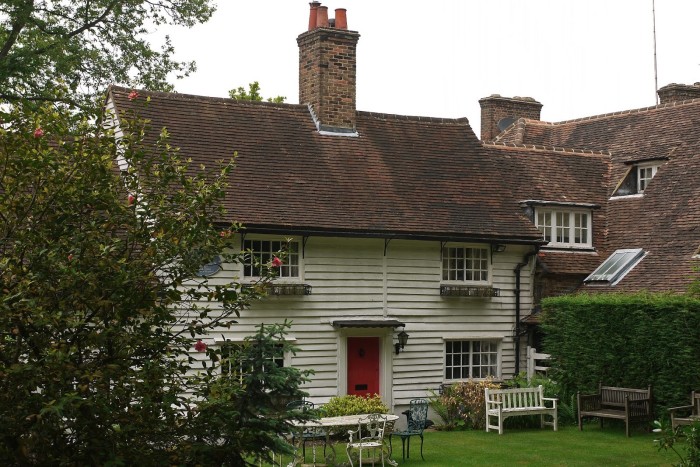
Linnell even proposed that Blake take lodging in the vicinity. Blake’s health prevented this- along with what Gilchrist called his “wilful dislike of the northern suburbs of London.” Despite the bracing air and the happy hours spent there, Blake:
“could only tolerate the southern suburbs. They who are accustomed to the varied loveliness of Surrey, Sussex and Kent, with their delightful mixture of arable, pasture, woodland, waste and down, one shading off into the other, cannot but find the unvaried pastures and gentle hills of Middlesex and Hertfordshire wearisomely monotonous in their prevailing heavy tints and ever recurring boundary lines; monotonous and unexhilarating, however agreeable they may be to the escaped Londoner.”
Ford Maddox Brown, Work.
Where next?
We have completed our journey in Blake’s footsteps. I would advise walking back into Hampstead itself now, following Heath Road from Jack Straw’s Castle. There’s plenty to do here, as well as the Northern Line tube station. You might wish to visit the National Trust property at Fenton House. If you follow Heath Road you will certainly pass ‘The Mount,’ a raised stretch of road where Ford Madox Brown painted ‘Work’ in 1865. I detoured past down Church Row and into the road called Frognal to see Kate Greenaway’s home at no.39 (below).
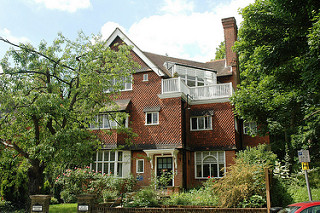
Further reading
For more on Blake, try reading Peter Ackroyd’s biography, cunningly entitled ‘Blake.’
This walk starts at one of Blake’s earlier homes, but in my fairytale for adults, Albion awake!, I have featured several meetings with Blake and Catherine at their Lambeth home in Hercules Road. I’ve previously posted an accompanying reading list and photo gallery to complement and enhance the story- and there are of course the two rambles in the Blakes’ footsteps through south London from Peckham to Forest Hill and from Forest Hill unto Croydon.
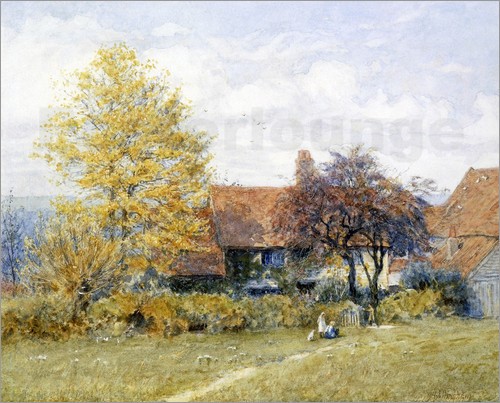
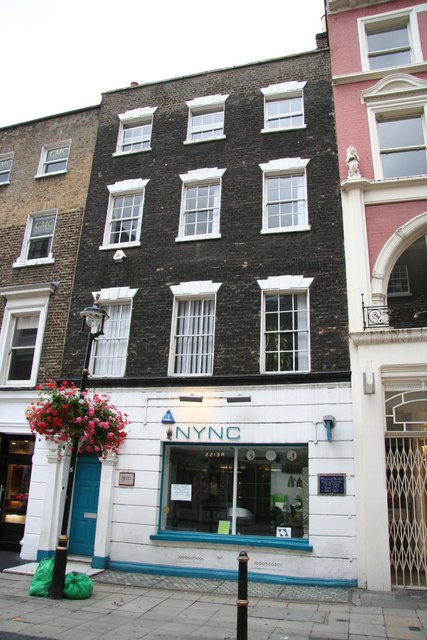
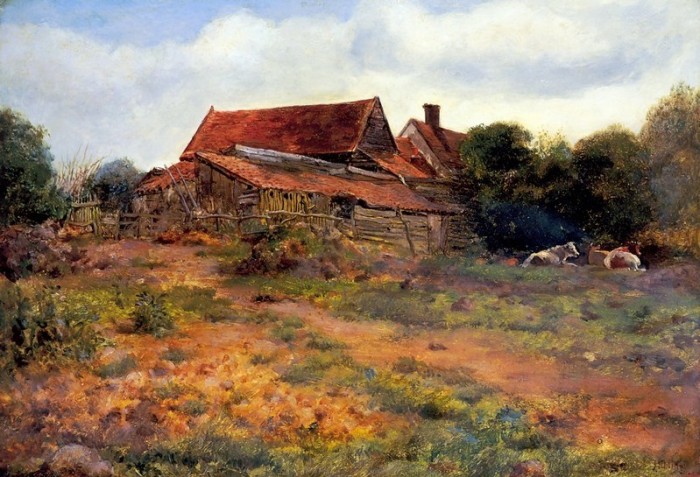

[…] have covered a good deal of this route already in our third William Blake walk, but I’m considering a ramble that connects the two, which would run from Borough up across […]
LikeLike
[…] one of a group of young artists who called themselves ‘the Ancients’ and were inspired by William Blake during the early decades of the nineteenth century. I have long been a fan of Blake and Palmer, but […]
LikeLike
[…] back of my mind. Finally, late last year, it all came together, connected by poetry, graffiti art, William Blake, alternative politics, classical mythology and the economic ideas of the counter culture. Waiting […]
LikeLike